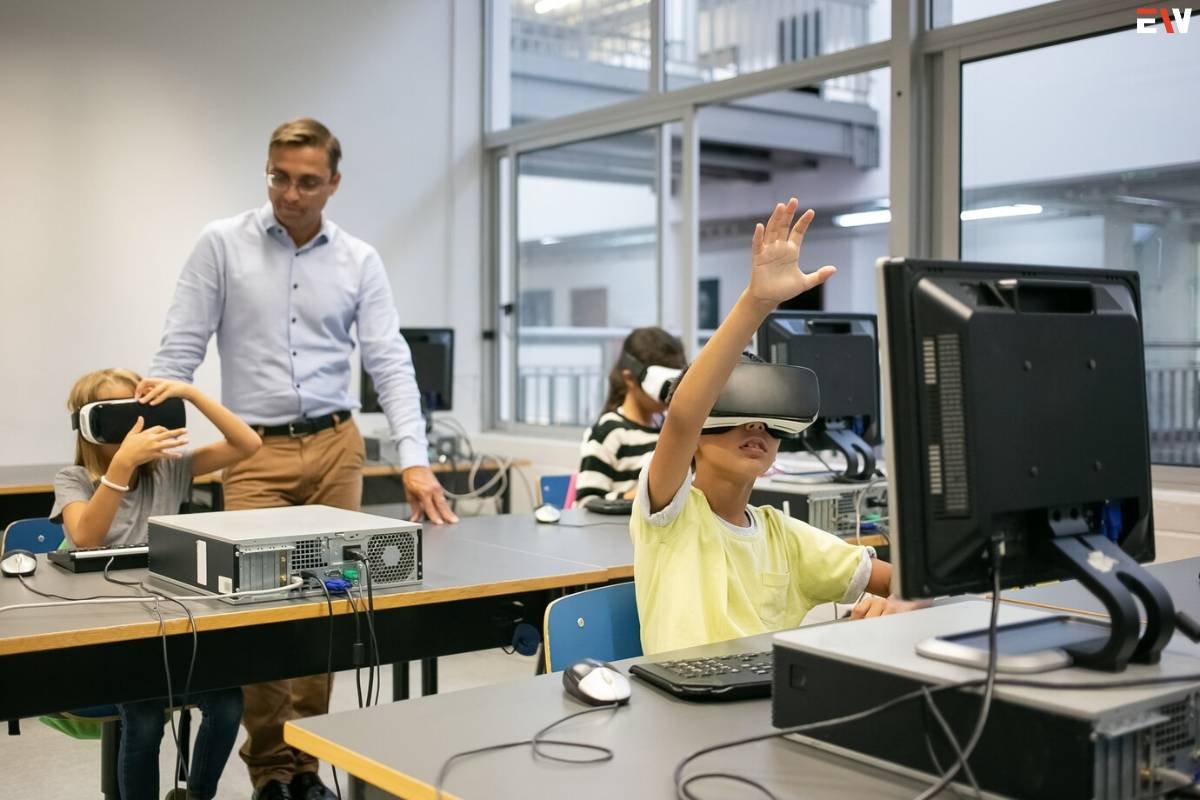The modern classroom is evolving, with educators seeking innovative ways to engage students and enhance the learning experience. As technology continues to evolve, Augmented Reality (AR) has emerged as a powerful tool, bridging the gap between the physical and digital worlds.
In this article, we’ll explore the use of augmented reality in the classroom, discussing its benefits, practical applications, and the future of education.
1 Unpacking Augmented Reality in the Classroom
Augmented Reality (AR) is a technology that overlays digital content, such as images, videos, and 3D models, onto the real-world environment. In the classroom, AR enhances traditional teaching methods by introducing interactive and immersive elements that captivate students’ attention and foster deeper engagement with the subject matter.
Key Components of Augmented Reality in the Classroom:
- Mobile Devices: AR is accessible through smartphones and tablets, making it a versatile and widely available technology for students.
- AR Apps: Specialized AR apps provide students with a platform to interact with AR content and experiences.
- Marker-based and Markerless AR: AR can be marker-based, where it requires specific trigger images to activate, or markerless, where it uses real-world objects and environments as triggers.
2 Benefits of Augmented Reality in the Classroom
The integration of AR in the classroom offers an array of benefits for both students and educators:

- Enhanced Engagement: AR makes learning interactive and enjoyable, capturing students’ attention and motivating them to explore subjects with curiosity.
- Visual Learning: Visualizing complex concepts becomes more accessible with AR, as students can interact with 3D models, diagrams, and simulations.
- Real-world Applications: AR helps students see the real-world applications of what they are learning, bridging the gap between theory and practice.
- Personalized Learning: AR allows for personalized learning experiences, catering to different learning styles and paces.
- Active Participation: Students actively participate in lessons, manipulating virtual objects, conducting experiments, and immersing themselves in historical events.
3 Applications of Augmented Reality in the Classroom
AR is already being integrated into various subjects, transforming the learning experience in the following ways:
- Science Education: AR allows students to conduct virtual science experiments, explore geological formations, and visualize the solar system in three dimensions.
- Mathematics: AR can make abstract mathematical concepts tangible, with students using AR apps to manipulate geometric shapes or visualize complex equations.
- History and Social Studies: AR apps bring historical events to life, enabling students to “walk through” ancient civilizations, visit landmarks, and witness key moments in history.
- Language Learning: Language students can interact with AR translations, enhancing vocabulary acquisition and pronunciation.
- Art and Creativity: AR enables students to create interactive art projects, enhancing creativity and self-expression.
4 Implementing Augmented Reality in the Classroom
Integrating AR into the classroom effectively requires careful planning and consideration. Here’s how educators can implement AR technology:

- Curriculum Alignment: Ensure that AR activities align with the curriculum and learning objectives.
- Teacher Training: Provide educators with training on how to incorporate AR into lessons effectively.
- Access to Devices: Ensure students have access to AR-compatible devices, and consider providing devices or creating a BYOD (Bring Your Own Device) policy.
- Content Development: Invest in or create AR content and apps that are tailored to the subject matter and age of the students.
- Assessment and Evaluation: Develop assessment strategies that evaluate the impact of AR on learning outcomes.
5 The Future of Augmented Reality in Education
The future of education holds promising developments in AR technology:

- Expanded Content Libraries: AR content libraries will grow, offering a wide range of immersive educational experiences for different subjects.
- Wearable AR Devices: The emergence of wearable AR devices, such as AR glasses, will further integrate AR technology into classrooms.
- AI-powered Personalization: AR, combined with artificial intelligence, will provide personalized learning experiences, adapting content and pacing to individual student needs.
- Global Collaboration: AR will enable global collaborative projects, where students from different parts of the world can work together on AR-enhanced projects and experiences.
Conclusion
Augmented Reality in the classroom is more than just a technological trend; it’s a transformative force that is reshaping the way students learn and interact with educational content. With its ability to enhance engagement, visualize complex concepts, and bridge the gap between theory and practice, AR is becoming an integral part of the modern educational landscape.
The benefits of AR technology extend beyond traditional subjects, offering opportunities for interactive learning in a wide array of disciplines. As educators continue to explore the possibilities of AR, students will benefit from personalized, immersive, and engaging educational experiences that prepare them for the dynamic challenges of the future. The future of education is undoubtedly augmented, and the possibilities are endless.
As Augmented Reality continues to advance, the possibilities for its integration in education are limitless. The collaboration between educators, content developers, and technology providers is crucial in harnessing the full potential of AR to enhance learning. With the continued growth of AR content libraries, the development of wearable AR devices, and the application of artificial intelligence to tailor educational experiences, students are on the brink of a new era in education. Augmented Reality is not just a technology; it’s a gateway to a world where learning is dynamic, personalized, and enriched by immersive experiences, providing students with the tools they need to thrive in an ever-evolving knowledge-driven society.










